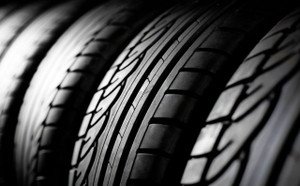What to look for when buying used tires
By Kijiji Autos
Buying used tires can seem daunting to the uninitiated. Here are some tips to make sure you end up with quality, well-kept tires:
Regardless of how many safety and performance features a vehicle has, their effectiveness is ultimately decided by the tires. That small patch of rubber at the bottom of the tire is the only thing connecting the vehicle to the road.
The thickness, condition, and type of tread (the pattern of raised bands that touch the road) determine how the steering responds to driver actions, how the suspension responds to curves, and the distance it will take to stop the vehicle. But before we look at how to buy used tires, let’s discuss some general tire information.
How to Read a Tire Sidewall
The sides of a tire are called the sidewalls. Each tire has two: the inner sidewall and the outer sidewall. If you look at a tire’s outer sidewall you will notice a big number stamped into the rubber. (Example: P215/50R17)
- The first letter denotes the type of vehicle the tire is made for. The most common are ‘P’ for Passenger Vehicle and ‘LT’ for Light Truck. The “P” at the beginning of the above example denotes that it is a tire for a passenger vehicle.
- The three-digit number after the initial letter indicates the tire’s section width (the width of its cross section) in millimeters. Basically, the section width is the width of the tire is at its widest point. More specifically, it is the distance from the outermost point of the outside sidewall to the outermost point of the inner sidewall. In the example, the tire’s section width is 215 mm.
- The second number (the number after the slash) is the sidewall aspect ratio. It indicates the height of the sidewall from the It is actually a percentage. – the ratio of how much of the aspect ratio tells us the height / profile of the tire. In our example, the sidewalls of this tire use 50% of the 215 mm section width. The higher the number, the taller the tire will be. So our ‘50 series’ tire is going to be a low profile tire, likely used on sports / performance cars.
- The letter ‘R’ indicates that the tire uses a Radial type of construction. In a radial tire, the wires (typically made of polyester or steel) under the rubber tread that give the tire strength are laid out perpendicular to the direction of travel.
- The last number is the diameter, in inches, of the wheel the tire is designed to fit. In our example, the tire is designed to fit on a 17-inch wheel.
What to Look for When Buying Used Tires in Canada
Tread Depth
The tread depth is the measurement, in inches, from the top of a tread to the bottom of its deepest valley. A typical new tire has a tread depth of 10/32 to 11/32 of an inch, and the minimum legal tread depth is 2/32 of an inch (meaning a tire with a tread less than 2/32 of an inch is not legal). A good used tire should have at least 5-6/32 of its tread depth remaining. You can easily measure the tread depth by inserting a quarter into the tread, caribou muzzle first. If the muzzle is not visible, then the tread depth is at least 6/32’s of an inch. If the entire muzzle is visible, then the tire has reached the legal minimum tread of 2/32.
A used tire with a tread depth of 6/32 should be able to cover around 10,000 km’s. It will also allow you to stop 100ft / 30m shorter than a tire with a 2/32 tread depth.
Tread and Sidewall Condition
A good used tire should have even treadwear (the tread should be worn out evenly), with no slick or smooth surfaces. The sidewalls should also be in good condition with no cracks, chips, or cuts. Look for wear rings in the sidewalls, as this will indicate the tire was driven when flat. Since driving on a flat tire can break down the structural integrity of the sidewall, pass on tires that show this type of wear.
Look for cracking between the tread blocks and where the tread meets the sidewall. You can push down on the tire and push in on the sidewall to expose hidden cracks.
Learn more about what you should do if you have a blowout or flat tire with your current set of tires.
Repairs
Look inside of the tire for signs of repair. If you see crude nubs of rubber sticking up, then the tire has been repaired with a ‘plug’. A plug is a piece of rubber that has been inserted in a hole in a damaged tire to repair the hole. A tire plug is less effective than a tire patch, and used tires with visible tire plug repairs should be avoided.
Age
To determine the age of a used tire, look on the sidewall near the bottom edge. Look for the letters “DOT”; to the right of “DOT” you will see a 4-digit number. The first two numbers indicate the week the tire was made (thus a number from 01 to 52), and the last two numbers indicate the year. You want to avoid used tires that are over 6 years old, because the oil in the rubber starts to dry out over time, leading to dry rot, cracking, and an unsafe tire.
When explained, the tire numbers make simple sense and give you a lot of information about the tire. If you follow these simple steps, you will be able to buy used tires that are not only safe, but offer great value too.
Easily find your next ride on Kijiji Autos
Search nowThe most affordable electric cars in Canada in 2023
Looking for a budget-friendly electric car? Discover the 12 most affordable electric cars for sale in Canada on Kijiji Autos. Plus, we answer your FAQs about the costs of driving, charging and insuring an electric car.2023 Mazda 3 GX vs GS: What’s The Difference?
The 2023 Mazda 3 is a refined compact car with styling and performance that give it a upmarket feel. In this article we'll break down the differences between the Mazda 3's GS and GX trim packages to help you decide which features you'd want to take or leave, as well as what they'd cost you. Click on the listings on our Search Results page to discover the Mazda 3 GX and GS for sale near you.Costs of Installing an Electric Car (EV) Charging Station in Canada
Installing a home EV charger can come with additional fees beyond purchase and installation. Here's a list of factors that can affect the price of a home EV charger.FWD vs AWD: What’s the Difference & What’s Right For You?
The main difference between FWD and AWD vehicles is the number of wheels their engines are able to send power to. This article will tell you everything you need to know about FWD vs. AWD and help you decide which is right for you.Toronto to Calgary Road Trip: Routes & Tips
Planning on driving from Toronto to Calgary? Here are some routes and tips to help you along the way.Coupe vs Sedan: What’s The Difference?
Coupes and sedans can both provide you with practical, fuel efficient transport that can also be fun to drive. Both body styles have their advantages and drawbacks depending on what you’re looking for in a new vehicle. In this article we’ll examine the differences between coupes and sedans and define both vehicles with examples.Is it hard to drive an SUV?
if you're stopping yourself from buying an SUV because you're afraid it's more difficult to maneuver, you'll be pleased to know that's not the case. In fact, first-time drivers will find driving an SUV no more challenging than smaller vehicles like sedans, as long as they follow a few tips outlined below.Sedan vs SUV: Which one is right for you?
Sedans and SUVs are two of the most popular kinds of vehicle on the market today. This article will examine the different characteristics of sedans and SUVs, highlighting the areas in which each shines and where their shortcomings lie to help you make the right choice on your next vehicle.Top 11 SUVs for Winter Driving in Canada
SUVs are some of the best-suited vehicles for winter conditions with a wealth of standard and available features to help you stay in control and get where you're going when the temperature plummets below zero. Here are 11 of the top SUVs for winter driving.Flat Tire vs Blowout: What's the Difference & What Should You Do?
The main difference between a flat tire and a blowout is that a blowout often feels like an explosion has occurred underneath your vehicle. Blowouts can cause sudden and drastic changes to the handling of your vehicle and can lead to minor or even serious accidents.









